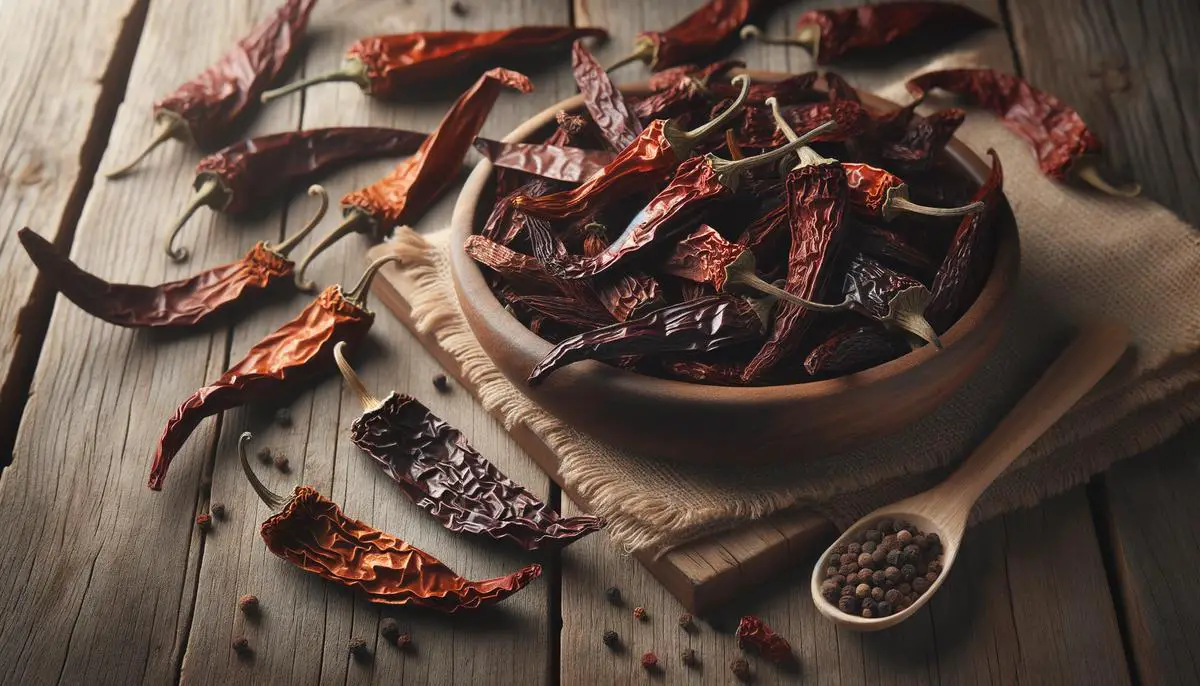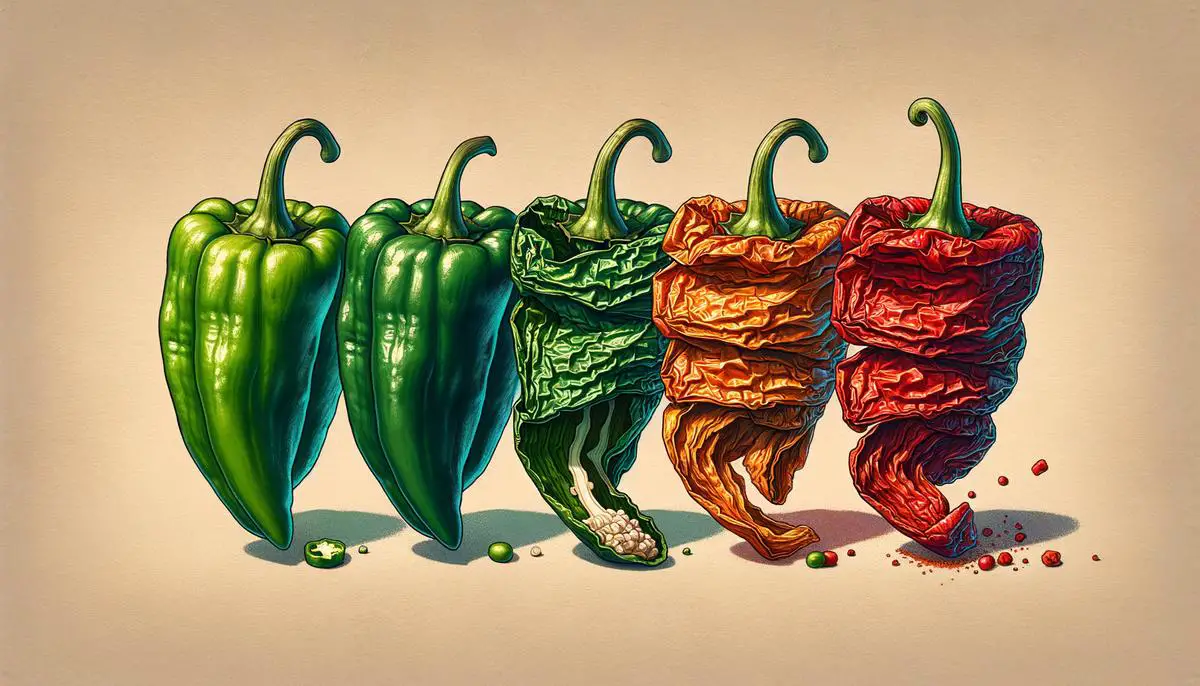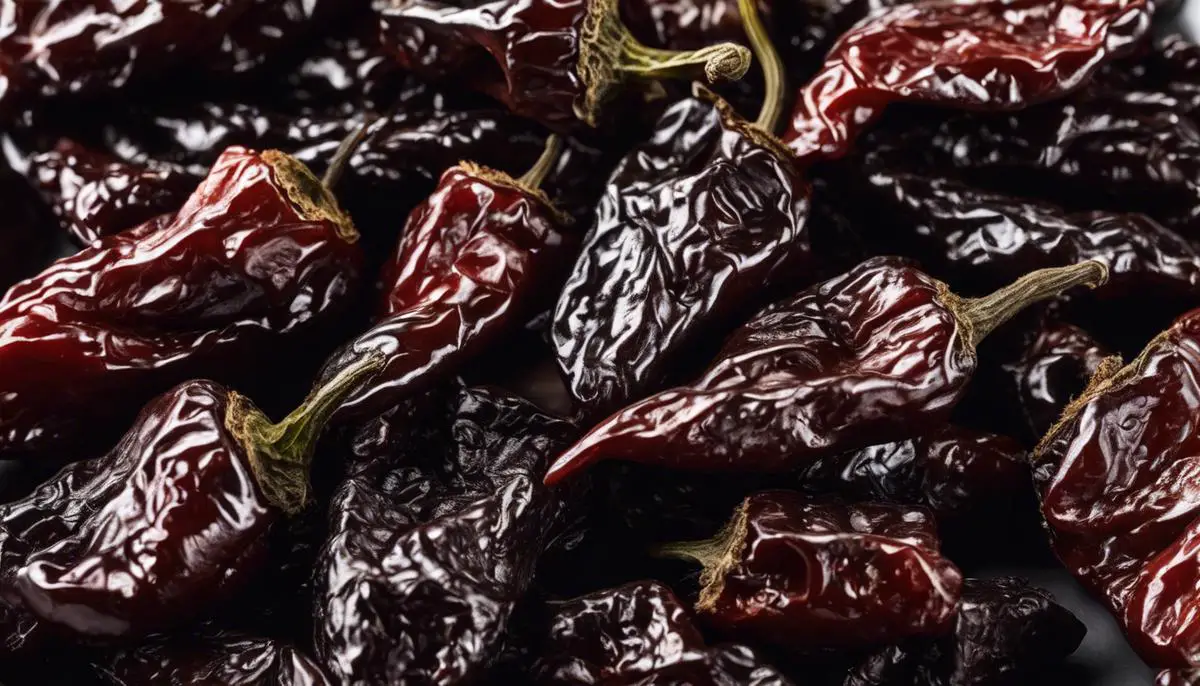
Poblano to Ancho Transformation
The journey of poblano peppers from their fresh, green state to the rich, dried form known as ancho chiles is a remarkable transformation that holds a cherished place in Mexican culinary traditions. Originating in Puebla, Mexico, poblano peppers gain a new identity as they age and dry, evolving in both flavor and application to become an indispensable ingredient in Mexican and Tex-Mex cuisines.
As the poblano matures, it shifts from green to a vibrant red. This change deepens the pepper's flavor profile. The ripe, red poblano peppers are then carefully harvested and set to dry, resulting in the creation of ancho peppers. This drying process preserves the pepper and enriches its taste with a complex smokiness that is subtly sweet with a hint of spice.
An ancho pepper features an earthy, mildly spicy dimension with sweet undertones, measuring between 1,000 – 2,000 on the Scoville Heat Units scale. This mild heat level makes it versatile in various dishes, offering a pleasant warmth.
Unlike raw poblanos, which are commonly used stuffed in chile rellenos, anchos are better suited for thickening and flavoring moles, stews, salsas, and sauces after rehydration. Their smoky depth brings an irreplaceable character to each dish they grace.
Cooking with ancho peppers often involves soaking them in hot water to soften before incorporating them into recipes. This step revives the peppers, releasing their full-bodied flavor. Whether blended into an adobo sauce, whisked into enchilada sauce, or ground into chili powder, ancho peppers impart a signature warmth and complexity.
Recognized alongside pasilla and guajillo chiles, ancho peppers contribute to a foundational palette of flavors essential to many Mexican dishes. Their incorporation ranges from mole sauce—a blend of spices, chocolate, and ancho chile—to the robustness they lend to a simple pot of chili.
The transformation from poblano to ancho provides insight into the sophisticated balance of flavors and techniques that characterize Mexican cooking. This metamorphosis extends the shelf life of the poblano pepper and amplifies its flavor, ushering in a variety of culinary possibilities that celebrate Mexico's gastronomic heritage.

Culinary Uses of Ancho Peppers
The culinary applications of ancho peppers are diverse, stretching across both traditional and contemporary recipes that highlight their versatility. Key to unleashing the ancho's potential is the process of rehydrating these dried chiles by soaking in hot water, which awakens the depth of their smoky sweetness.
Ancho peppers are integral in the art of making mole and adobo sauces, both pillars of Mexican cuisine. Mole incorporates chocolate, spices, and ancho chiles in a thick sauce that enrobes chicken or turkey in celebratory meals. The careful selection of ingredients blends into a complex amalgamation where the ancho is indispensable.
In adobo sauce, anchos are harmonized with tomatoes, garlic, and herbs to produce a vibrant marinade or cooking sauce that complements everything from tacos to grilled meats. These sauces capture the essence of Mexican culinary tradition and demonstrate the chile's flexibility in creating both rustic and refined flavors.
Ancho peppers are part of the 'holy trinity' of Mexican chile peppers, along with pasilla and guajillo chiles. This trio forms the backbone of countless dishes, offering a range of flavors from the ancho's sweet, smoky warmth to the slightly tangy notes of the guajillo. Together, they contribute to a profound flavor profile that embodies the soul of Mexican gastronomy.
The use of ancho peppers transcends traditional Mexican dishes. Modern chefs and home cooks have embraced their complex profile, incorporating them into innovative recipes worldwide. From ancho-infused chocolate desserts to bourbon-ancho cocktails, the versatility of these peppers inspires creativity in the kitchen. This adaptability has cemented the ancho's status as a staple of Mexican cooking and a global culinary treasure.
Beyond their contribution to sauces and stews, ancho chiles excel in dry rubs and seasonings, adding depth and warmth to meats and vegetables. They elevate the flavor profile of dishes, whether through a subtle infusion of heat in a slow-cooked brisket or as an integral spice in vegetarian chili.
The ancho pepper's journey from a fresh poblano to a revered component of culinary masterpieces epitomizes the transformative power of cooking. As it moves from traditional uses to modern interpretations, the ancho remains a beloved symbol of culinary innovation and tradition—a testament to its timeless appeal in kitchens around the world.
Selecting and Storing Ancho Peppers
When exploring culinary uses of ancho peppers, selecting the finest quality is key. High-quality anchos have a rich, deep reddish-brown color with a slightly glossy sheen, indicating they were dried at the peak of ripeness. The skin should be somewhat flexible; peppers that are soft and pliable promise freshness and, when rehydrated, reveal a supple texture ideal for crafting sauces and stews.
Anchos that appear overly dry, brittle, or shriveled may have lingered too long on the shelf or prior to packaging—they may have faded flavors. Additionally, avoid any specimens with discoloration or spots, as these blemishes may indicate improper drying or potential spoilage. Choosing anchos with these qualities will ensure vibrant flavor in your dishes.
Proper care and storage are important in preserving the depth of flavor in ancho peppers. Despite the misconception that dried peppers have an infinite pantry life, anchos, like all spices and dried produce, have a taste and aroma that diminish over time. To safeguard their character, store them in a cool, dark place, shielded from sunlight which can fade their color and flavors. Consider sealing them in an airtight container or vacuum-sealed bag, which combats moisture and prevents mold growth.
For longer storage, freezing is an option. Arranging the peppers in a single layer before sealing them in a freezer bag permits ease of selection for future use, preserving their smoky richness for up to a year. This method maintains the peppers' structural integrity and prevents the aroma from permeating other items in your freezer.
While pre-ground ancho chile powder is convenient, using whole anchos allows for toasting—an act that revives dormant flavors and permits customization of the grind for dishes that require a smoother texture or more immediate infusion of flavor.
In the dance of flavors that Mexican cuisine orchestrates, anchos play a versatile and vital role. From careful selection of supple, vibrantly colored peppers to mindful storage that honors their flavor, each step enriches the culinary journey. By cherishing these practices, home cooks unlock a world where ancho peppers contribute spice and soul to every meal they grace. This reverence for selection and storage ensures that the beloved nuances of ancho peppers continue to inspire exploration and adoration in kitchens far beyond their Pueblan origins.

- Trejo-Gonzalez A, Loyo-Gonzalez AG, Munguia-Perez R. The science of Mexican cooking: ancho and guajillo chiles. Am Lab. 2017;49(11):23-25.



